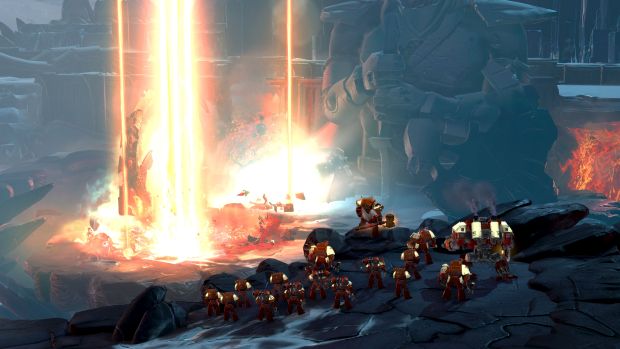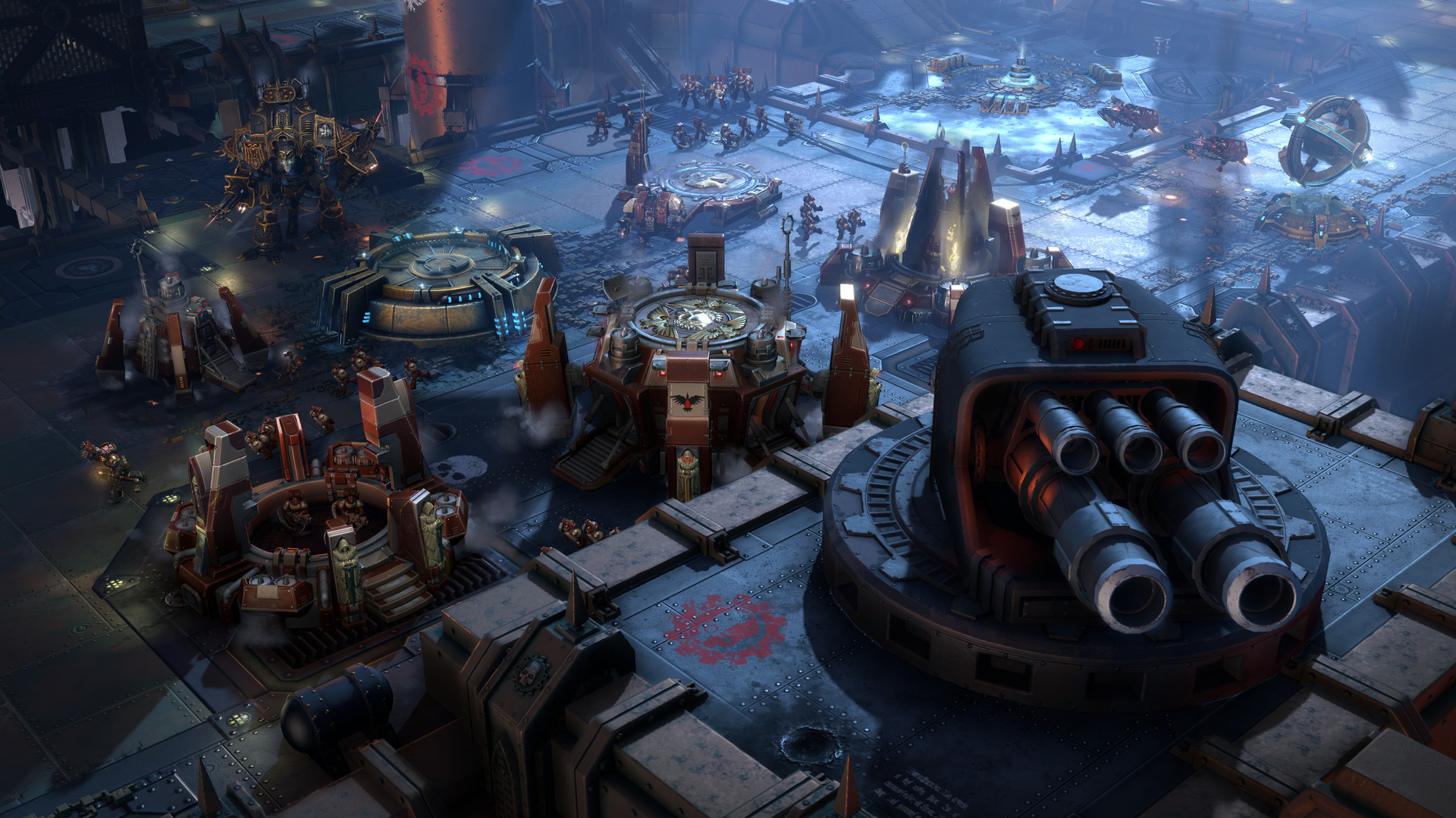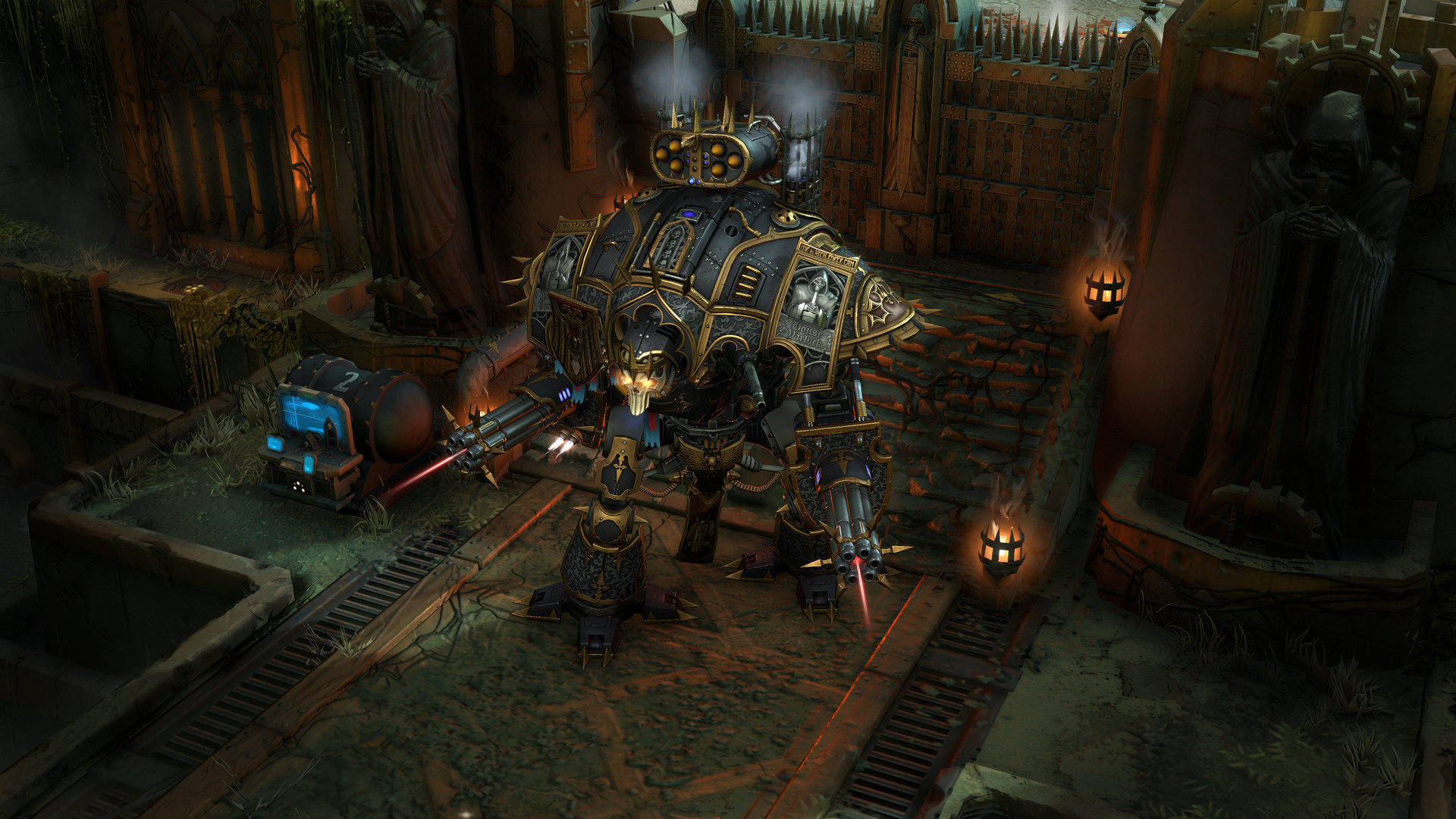
Relic Entertainment has a pretty strong following among strategy fans and for good reason – it revitalized real-time strategy gaming with franchises like Company of Heroes and Warhammer 40K: Dawn of War. The latter will be making a comeback of sorts with Warhammer 40K: Dawn of War 3, a sequel that continues the conflict between the Space Marines, Eldar and Orks. It’s out on April 27th for PC.
GamingBolt spoke to game director Philippe Boulle about Dawn of War 3’s development, recent updates and what can be expected.
"We’ve been very busy getting the game ready, to be honest. Relic games, and RTS games in general, involve a lot of moving pieces and it’s really important that we take the time we need to get them all right."
Given how Dawn of War 2 released in 2009, what motivated a return to the universe with the sequel? How do you feel Relic’s knowledge of development over the years helped in shaping Dawn of War 3?
It was never a question of if, just of when we would tackle Dawn of War III. The franchise is a huge part of the studio – and personally it’s what I came to Relic to work on. There’s a lot of 40K love at the studio and we’re thrilled to be back working in that property.
Dawn of War III is the product of all our products to date. We spend a goodly amount of time looking back at the previous games in the franchise to see what we wanted to bring forward. We also looked to Company of Heroes (I and II) and Relic’s other games. We married this to some modern innovations from the broader strategy genre. We’re really proud of where we’ve landed and we can’t wait for the fans to experience it.
Dawn of War 3 has seen its share of marketing ups but we haven’t heard much in a while. How has development been progressing over the past few months?
We’ve been very busy getting the game ready, to be honest. Relic games, and RTS games in general, involve a lot of moving pieces and it’s really important that we take the time we need to get them all right. But, fans just got their first taste of Dawn of War III’s multiplayer, we announced our release date, and we’ve opened up pre-orders. So the time has paid off. We won’t keep fans waiting long.
How important is the plot in the third game? How will it appeal to both Dawn of War fans and Warhammer 40K buffs?
Story is critical to Dawn of War and we’ve dedicated a lot of energy to crafting an incredible story for players to experience. Existing fans of Dawn of War (and 40K in general) will find lots of familiar faces and pick up elements from the previous games. We absolutely wanted to honour the many worlds and conflicts in this fantastic setting.
But we didn’t want to produce a story that was just an extension of existing plot lines. We needed this to an epic that stood on its own and that welcomed people into this universe of constant warfare. That meant digging deep into our protagonists and almost rebuilding them from the ground up. Our heroes – Gabriel Angelos of the Space Marines, Farseer Macha of the Eldar, and the Ork Gorgutz ‘Ead’unter – are the centre around which the whole story revolves. These are nuanced characters that both embody their factions and have their own drives.
Players will get to embody each of these heroes across the story of the game. We are giving equal love to all three factions.
"Are the Super Walkers able to turn the tide of a battle? Absolutely. Are they unstoppable, instant-win buttons? Far from it."
How do the three factions – the Eldar, Space Marines and Orks – differ from each other this time around? What balance changes, new units and whatnot can veterans and new players expect?
Dawn of War III’s factions allowed us to create a solid and exciting gameplay ecosystem for players. Each one gives players a wide range of mechanics, units, and abilities to choose from as they work to develop their unique play styles. What’s more, the factions offer a diversity of voice and personality that brings out the best of the universe.
Franchise veterans are going to see a distinct evolution of each faction for Dawn of War III. When we decided to bring these three forward, we identified the core elements that makes each army compelling, and seed this throughout their heroes, abilities, buildings, mechanics, animations – everything really.
For Space Marines, you see their superior technology and precision strikes in the higher profile role of drop pods, and their Orbital Bombardment. For Eldar, you see their protection of their sparse numbers in their mobility, teleportation, and regenerative battle focus. For Orks, you see their unstoppable momentum come to life through salvaging scrap to upgrade and build units from the foes they rip to shreds.
Our single-player campaign unfolds through missions that rotate from faction to faction, helping them get introduced to the strengths and weaknesses of each, preparing them for our fast-paced multiplayer combat where all three go head-to-head.
What challenges did you face with the new walker units? Was it difficult to balance them and how significant of a role do they play in combat?
The Super Walkers are incredibly powerful, they look stunning, and their abilities are so satisfying to deploy. We want that moment a player deploys a Super Walker onto the field to feel like a victory in and of itself, and on the flip side, we want players to relish the moments that they’re able to take out a competing player’s most powerful weapon.
Are the Super Walkers able to turn the tide of a battle? Absolutely. Are they unstoppable, instant-win buttons? Far from it. We never wanted a match to feel like a race to deploying a Super Walker, and we didn’t want to invalidate other strategic load-outs and elite choices. For that reason, each Super Walker can be countered and taken down, like any other unit, and needs to be supported by the rest of an army in order to be successful.
Lady Solaria, the Space Marine’s Imperial Knight, is a great example of this. She’s a ranged powerhouse who can easily obliterate the front line. But, if a few troops of Howling Banshees rush in behind her minimum range, they can limit her movement and slowly chip down her health. Her powerful abilities also involve some wind-up time, giving enemies the opportunity to stun or interrupt before she fires.
Why the return to the first Dawn of War’s style of base-building? How does it affect mechanics introduced in Dawn of War 2?
When we set out to make Dawn of War III, we knew we wanted to celebrate the best features of previous instalments. DOW2’s influence can be seen in the incredible elite heroes and their abilities that are so fun to unleash upon your enemies. From vanilla DOW, we wanted to get back to the staggering scale of battle that felt oh-so 40K. From our perspective, large armies and base-building go hand-in-hand.
Using buildings, resource production, and tech trees helps us pace out the escalation of a mission or match. Players need to make smart choices of what they’re building and when, in order to earn their way up to the higher power abilities and units.
"We’ve added four Escalation Phases to our multiplayer matches, each introducing different effects like defeated units refunding a percentage of their cost, increased production by resource, or increased structure health."
But even on the base building and economy side, there are some DoW2 touches. We brought forward the idea of resource points owned by a team rather than an individual – allowing you to build on and add to points captured by your allies. Every player spends resources on their own, but the whole team earns together.
Elites are the clearest DOW2 influenced element. They deploy based on Elite Points accrued over time, helping us balance what’s an early game elite versus a late game elite. Players will need to manage their bases, resources, and tech trees in order to reach the point of deploying elite, and will need the right mix of line units to support them.
What can we look forward to in terms of multiplayer (like new modes and whatnot)?
Dawn of War III’s multiplayer pits the three factions against each other in a tense, chaotic fight to the finish. It really puts the strengths and weaknesses of each faction to the test as you try to put powerful heroes and devastating abilities to use, while countering those of your foes. It’s fast, it’s fun, and we think players are going to love it.
We’re launching with 1v1, 2v2, and 3v3 modes. In each mode, teams will fight to destroy three structures – while protecting their own, of course – in order to win the match. These structures are Shield Generators, Turrets, and Power Cores. The structures create points of conflict to draw teams together for epic victories and crushing defeats within a single match.
Likewise, the interactions between elite heroes give rise to micro victories that help make each match more memorable. We want players to celebrate each time they defeat an enemy elite or Super Walker. Even if they don’t win the match, they’ll still have that ‘gotcha’ moment and some bragging rights.
Lastly, we’ve added four Escalation Phases to our multiplayer matches, each introducing different effects like defeated units refunding a percentage of their cost, increased production by resource, or increased structure health. We’re very excited with how this has changed the flow of a match. It keeps players active even when they’re at a disadvantage; taking away some of the dead man walking syndrome of long RTS matches.
Have you begun planning out post-launch content, especially given how well Chaos Rising and Retribution were received for Dawn of War 2?
We don’t have much to share on this at this stage. Obviously we want to keep building this franchise, and giving players more to experience, but for now we’re focused on delivering a Dawn of War at launch that will have been worth the long wait.
With the increased presence of strategy titles on consoles, will we see Dawn of War 3 or future Relic titles coming to Xbox Scorpio or PS4 Pro?
We love seeing the expansion of the strategy genre to other platforms, but we’re focused on a PC launch. That’s where Relic and Dawn of War were born and that’s where we wanted to bring the franchise back.

















